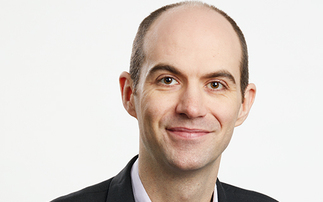Key points
At a glance:
- Regulatory pendulum has swung back in favour of trustees and members
- Schemes need more direction on regulator’s interpretation of case law
- Industry unsure how TPR will regulate ESG disclosures in SIPs
Panellists at an industry roundtable discuss their need for more clarity and balance from the regulator. James Phillips reports
The Pensions Regulator's (TPR) ‘clearer, quicker, tougher' mantra has decidedly struck a chord across the pensions industry.
The last few years, some argue, have seen the pendulum swing from a focus on employer sustainability towards member protection. In the middle of all this, the industry is crying out for balance and for this to be set out clearly.
At its second Innovation Café, held last month, Stephenson Harwood convened a group of industry professionals to discuss the direction of travel for the watchdog, and what it can do to help the industry understand its expectations better.
Attending were: Stephenson Harwood partners Graham Wrightson and Philip Goodchild and professional support lawyer Julia Ward; Deloitte director Simon Kew; Outer Temple Chambers barrister Michael Uberoi; Willis Towers Watson senior consultant Mike Lord; 2020 Trustees director Kevin Dolan; and Aon partner Matthew Arends.
DB funding
The regulatory landscape has been turbulent for several years and trustees and sponsors are coping with an increasing pile of legislation and regulation.
Following the collapse of BHS and the saga of the British Steel Pension Scheme, the government was pressed to reform the DB landscape, pressure that culminated in its DB white paper.
But is this regulation going the right way? Willis Towers Watson's Lord said it "very much feels like they're trying to remove all the risk out of pensions".
"There is a question of whether this is a bit of an overreaction to some events, or if some people will see it as a correction to some of the previous iterations where the regulator was given the additional statutory objective to look after employers' interests. Some people may have felt it went too far that way, and is now correcting that."
Arends agreed that regulation is reversing towards trustees and members: "I do accept the point about the pendulum swinging back perhaps in favour of trustees and less in favour of employers. But I think what's happening is the regulator is taking DB plans on a journey to decommission them and this is the next step in that process."
Six statutory objectives underpin TPR's work, one of which is to minimise the adverse impact on the sustainable growth of an employer within DB scheme funding.
The white paper set out a suite of fresh regulatory powers and the beginnings of a revised funding regime, which TPR is expected to launch two consultations on. But concerns have already been expressed that this could become too rigid.
Kew expressed concern along these lines, wondering where TPR would firm up its expectations.
"If you're a strong employer, it expects your recovery plan to be significantly under the seven years. Well, what's ‘significant'? Why seven years? As soon as the regulator starts to put lines in the sand - very clear, defined lines in the sand - it can create issues for itself. And I think it works best when it does have an element of flexibility."
But there are areas where clarity would be gained from more starkly-defined expectations. For example, Lord asked: "Is there a need for the regulator to better define what it means by covenant, or has it gone past that point and focused purely on the cash? It is such a nebulous concept."
Covenant assessments should also encompass future business plans and the sponsor's overall movements, not focus primarily on free cashflow or dividend payments, he said.
Employer interests
Yet, the danger of TPR providing more clarity is, one some topics, it arguably begins to move past pensions and into business strategy.
"The regulator's primary objective is to protect pensions. It's now starting to talk about things which are arguably outside of its remit," Lord added. "The ratio of contributions to dividends - is it still pensions? If it starts talking too much about dividends, is it actually going into areas where it's actually got no remit?"
This leads to an ongoing debate about the place of employer interests, an area made more confusing by a recent judgment in Keymed Limited vs Hillman and Woodford.
The High Court litigation explored whether the scheme's trustees had acted in breach of a duty to the employer when they established a separate executive scheme with a lower-risk investment strategy.
In the ultimate judgment, published in March, the High Court ruled the trustees "owed no duties to Keymed". So what priority should trustees place on their employers' views?
For Uberoi, the judgment was stark and goes against prior case law: "It says, ‘I'm knocking on the head the idea that there is a separate duty owed to the employer'. That jars a bit, because it ignores the traction of the last 20 years. If you go back to cases like Edge, Stena, and MNRPF, there is some form of duty owed to the employer because you need to consider their interests."
But he was not convinced the judgment can be read that easily.
"I think the judgment has been slightly tokenised, and a slightly simplistic interpretation of it has just been, ‘bang, that's the end of the employer duty argument.'"
He said, while future litigation will need to heed the Keymed judgment, where the facts are largely different it can be set aside as a case-specific judgment.
"You can have more of a subtle argument where, actually, it's not wrong in its own forum and on its own facts but it doesn't, in itself, counteract MNRPF."
He adds the rule was established in the High Court and could easily be overridden but it will be a "really interesting argument when it is next ventilated".
The remaining question, however, is how this is then interpreted by the regulator in conjunction with its statutory objective.
Lord: "If you lay on the context of the current political environment and the pressure on the regulator, is there a risk the regulator thinks about it in a simplistic way? I think it's a bit cleverer than that."
Feedback
All of this leads to a need for the regulator to set out its absolute interpretation of legislation, regulation and case law but, Lord said, this might be a "pipedream".
"You don't see the regulator comment on these things but this feels like one where - if it could give some position statement - that might actually be useful for the industry. It would potentially reassure that there isn't going to be that oversimplification."
But this might be too difficult to achieve, Uberoi stated. To him, without a further hearing on the issue, there is no "knockout point" to declare one case as superseding the other.
"It's much more complex by the fact that the issue has come up in two quite different cases, so it would be difficult for TPR to issue that kind of simple statement saying it's going with one or the other."
Wrightson said some cases have obviously had more impact than others - but complete adherence to judgments is not universal among TPR's actions.
"There have been instances where the case law is clearly steering it in one direction. But it's case law on one side and the statutory position on the other, which the regulator is trying to make sense of."
So how should schemes react? Uberoi said schemes should demonstrate they've attempted to follow the rulings.
"It seems to me to be an interesting and potentially strong argument to say ‘Hang on a minute, we've done our best to follow confusing judge-led guidance'. It wouldn't necessarily strike you as particularly fertile ground for regulatory action."
This flows through to yet another area of regulatory change trustees will soon need to be complying with: disclosure of financially-material ESG considerations.
All schemes will need to publish an explanation of how their investment strategies considers these issues - or why not - but there is uncertainty about how these will be reviewed.
Uberoi said this is a perfect example of a "potentially confusing landscape". But, while this may be true, Dolan added it was an "absolutely big issue" for trustees who are "very aware of the fact that constant failure needs to be addressed" with asset managers.
There is such a variety of ways to comply, trustees are delegating to the investment advisers.
For Dolan, the starting point is to "understand your membership" to realise what they want, but also "providing choice, not necessarily saying every fund has to have ESG under it".
But where does the regulator fit in all of this? It has the power to inspect the resulting documents but where would it act.
Stephenson Harwood's Ward believes the regulator would find it hard to act unless a scheme had obviously disregarded all ESG considerations with no explanation for why.
"The DWP had this throwaway comment where it said if it's an investment issue that's contested, trustees should focus exclusively on financially-material risks and opportunities," she said. "It sounds like you can think about, where all things are equal, take ESG into account, but otherwise financial considerations alone."








